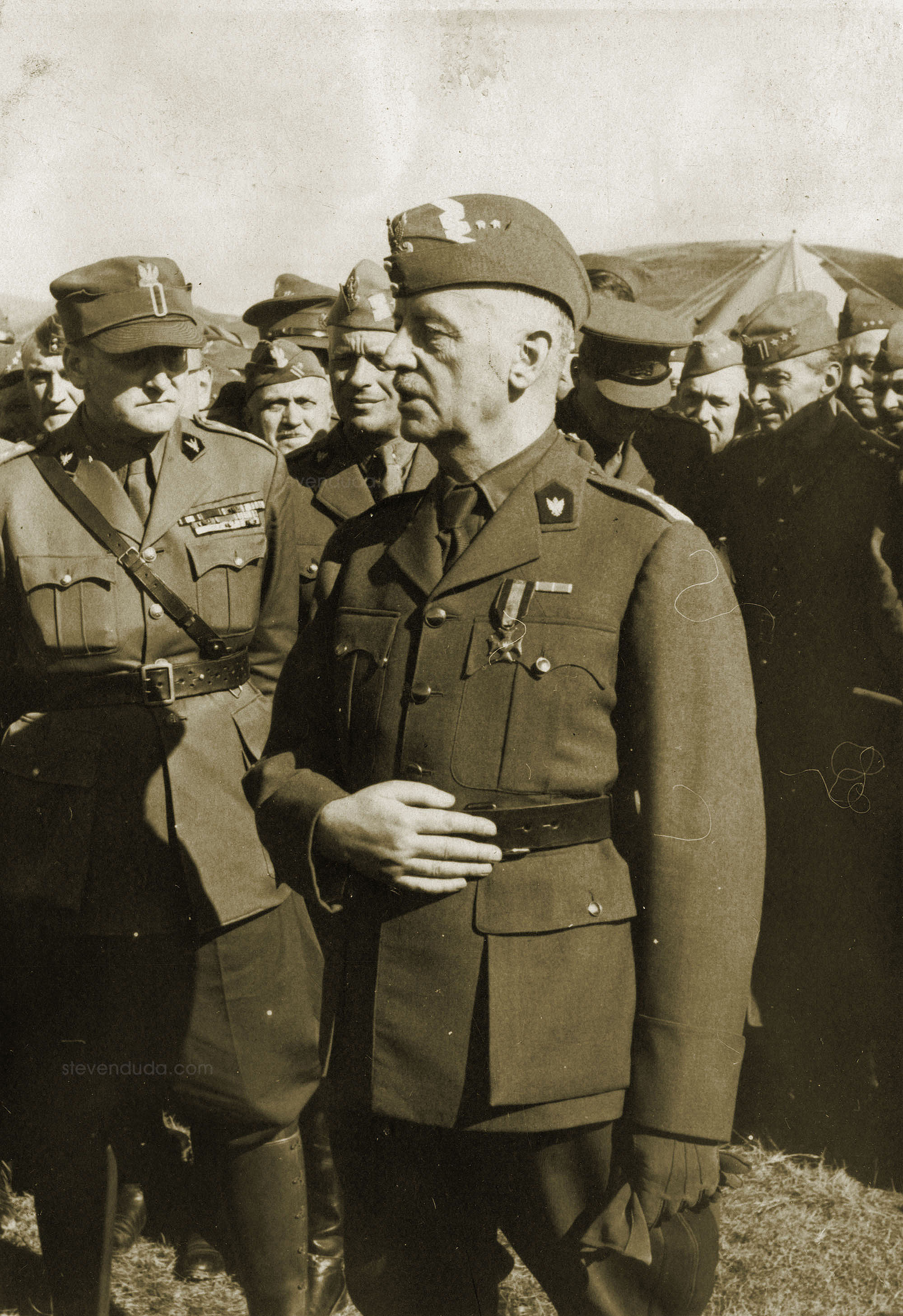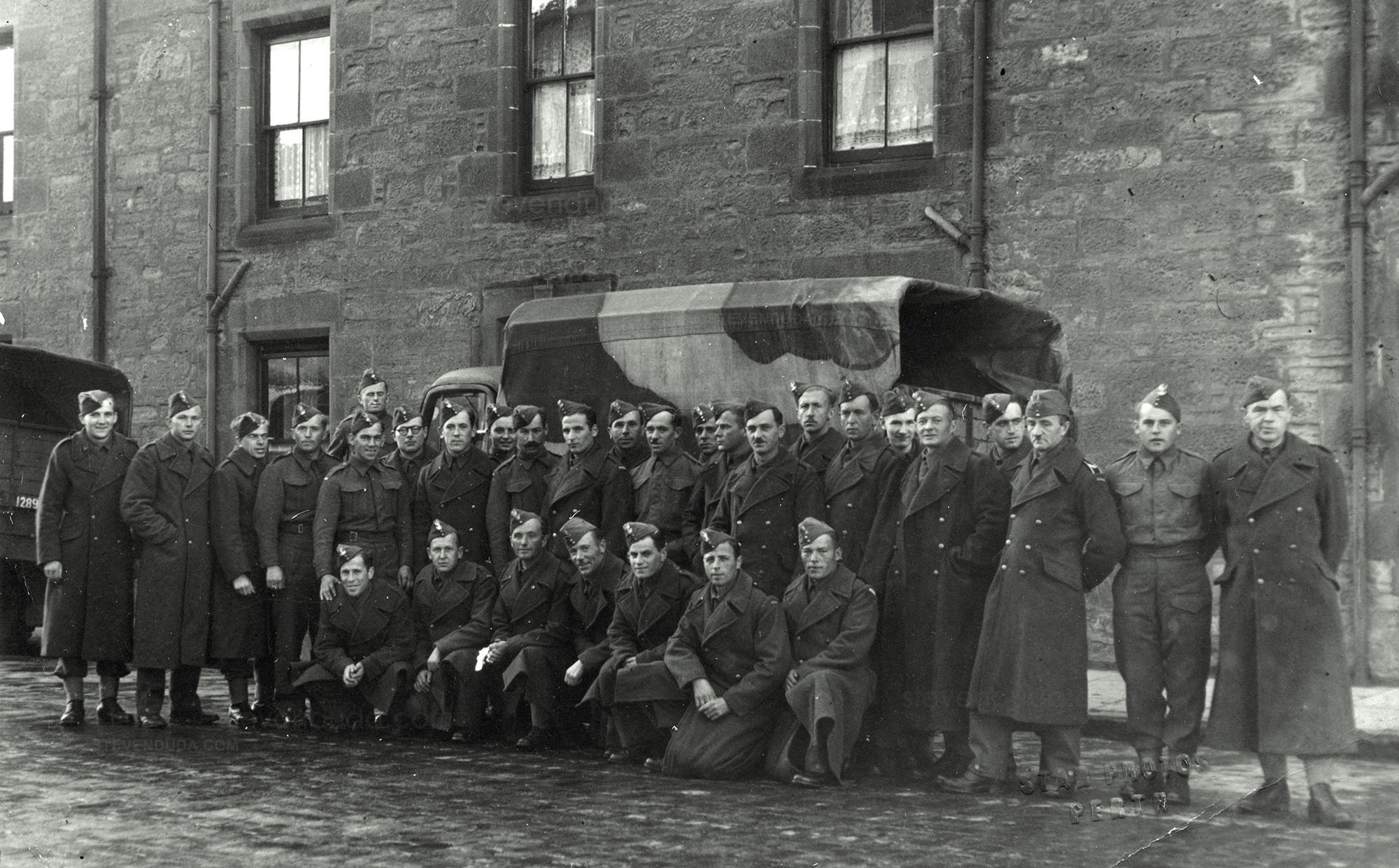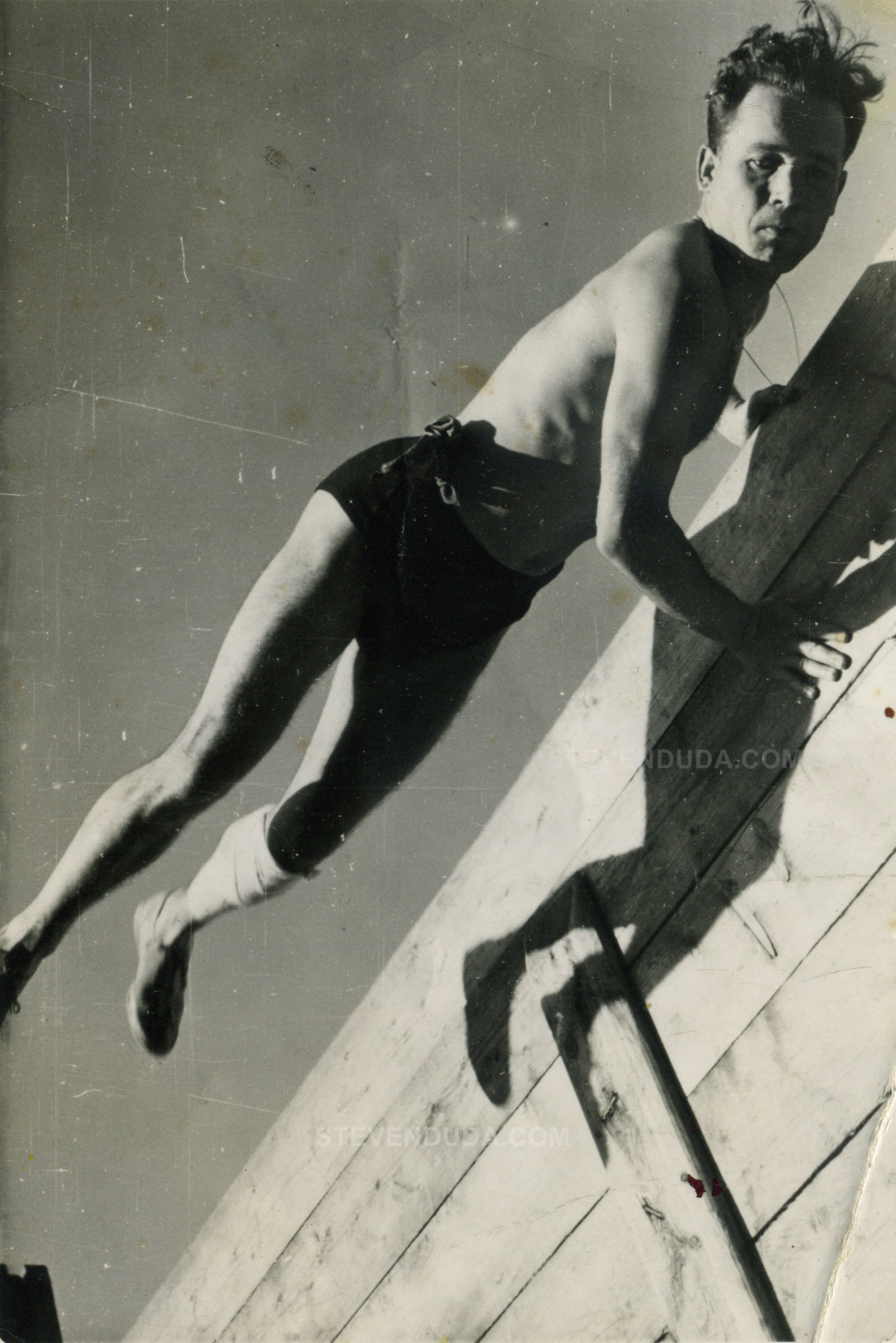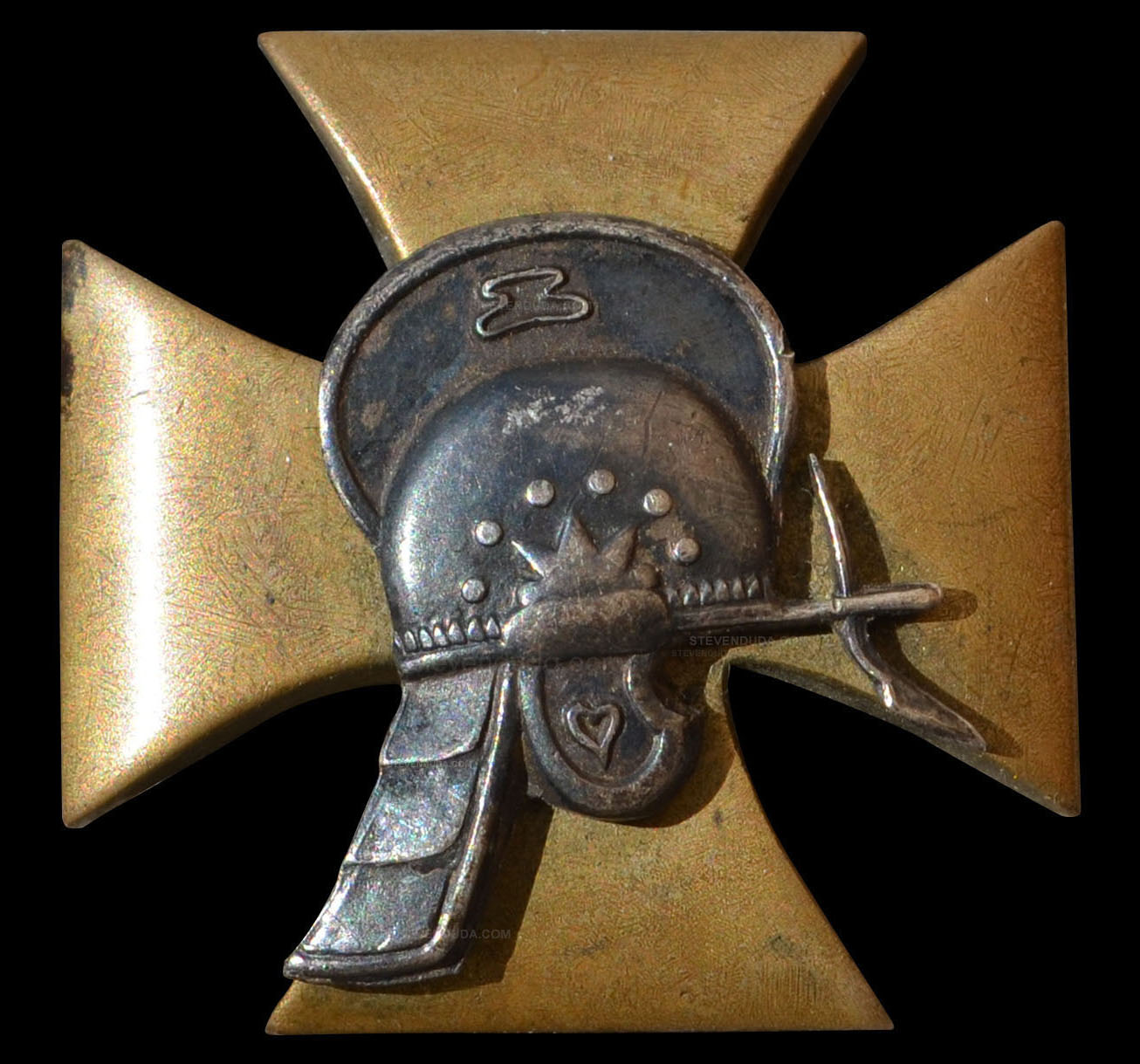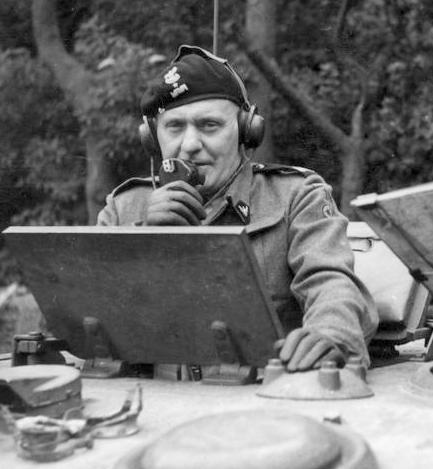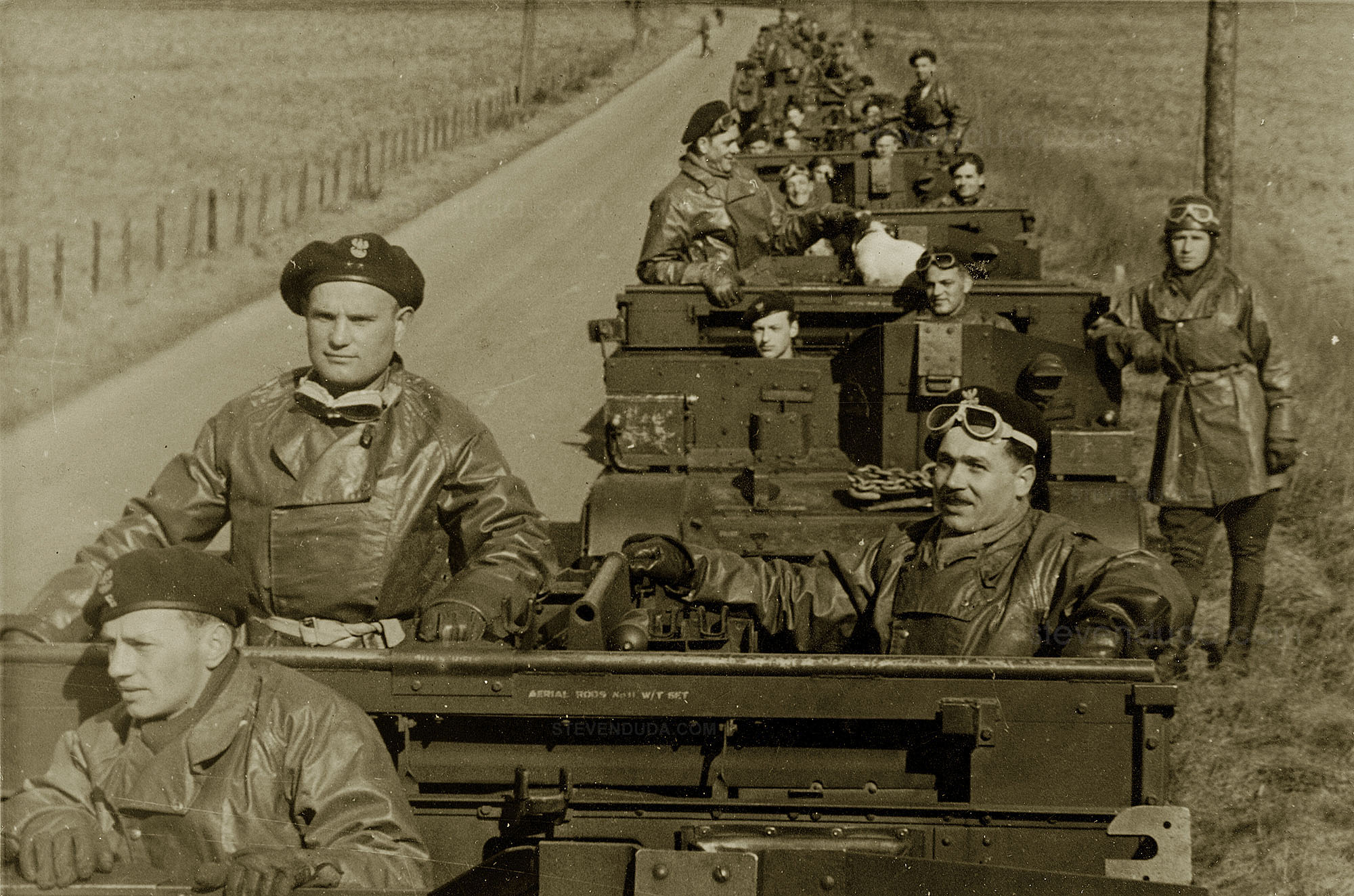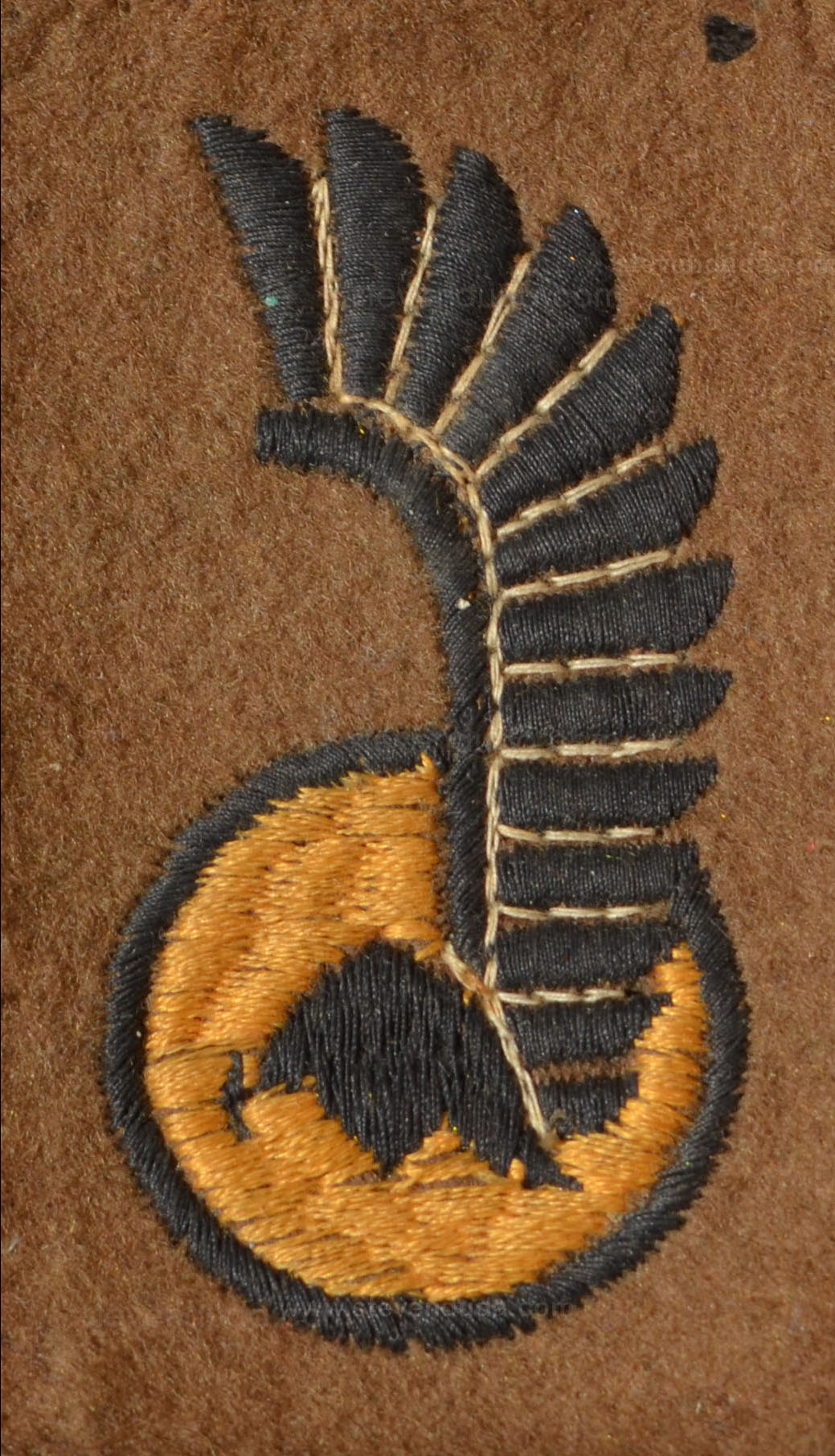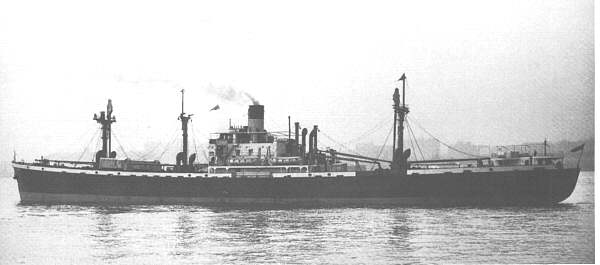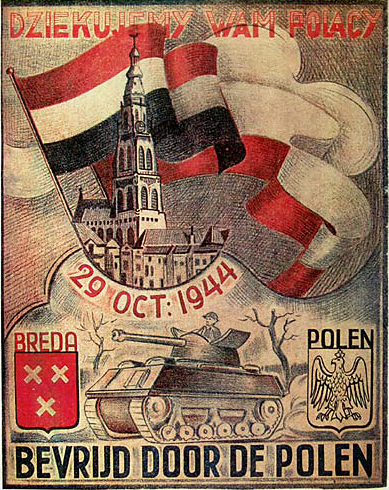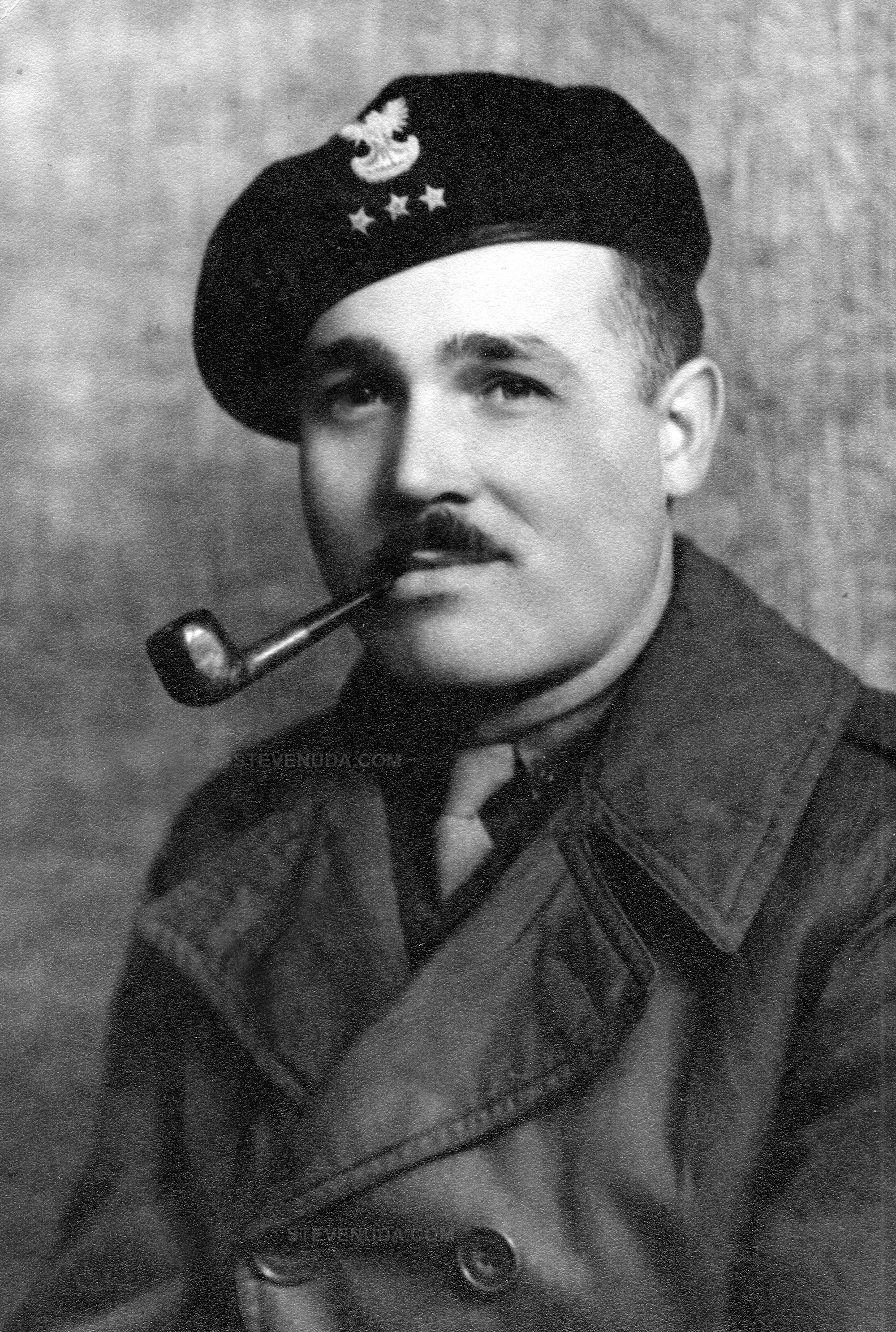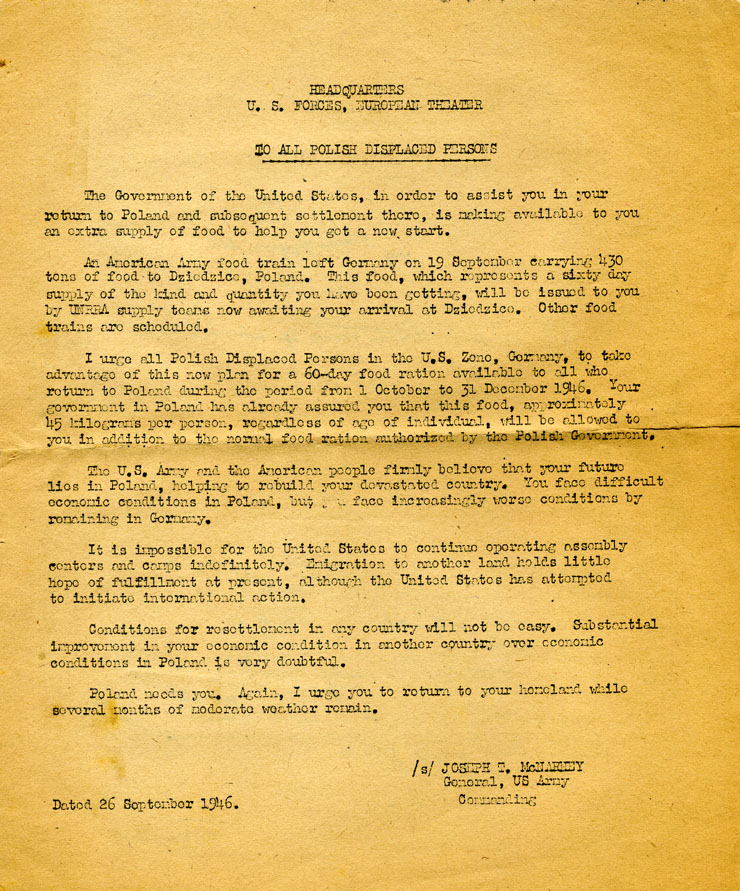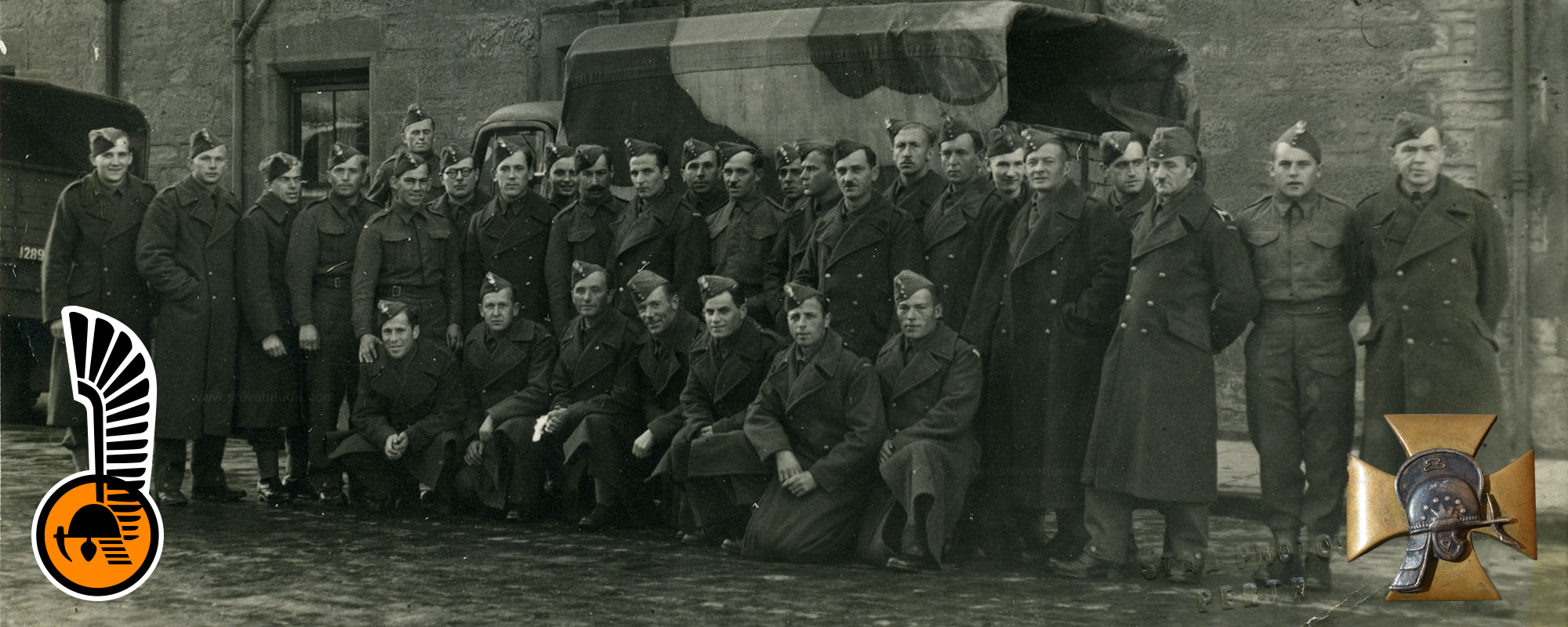
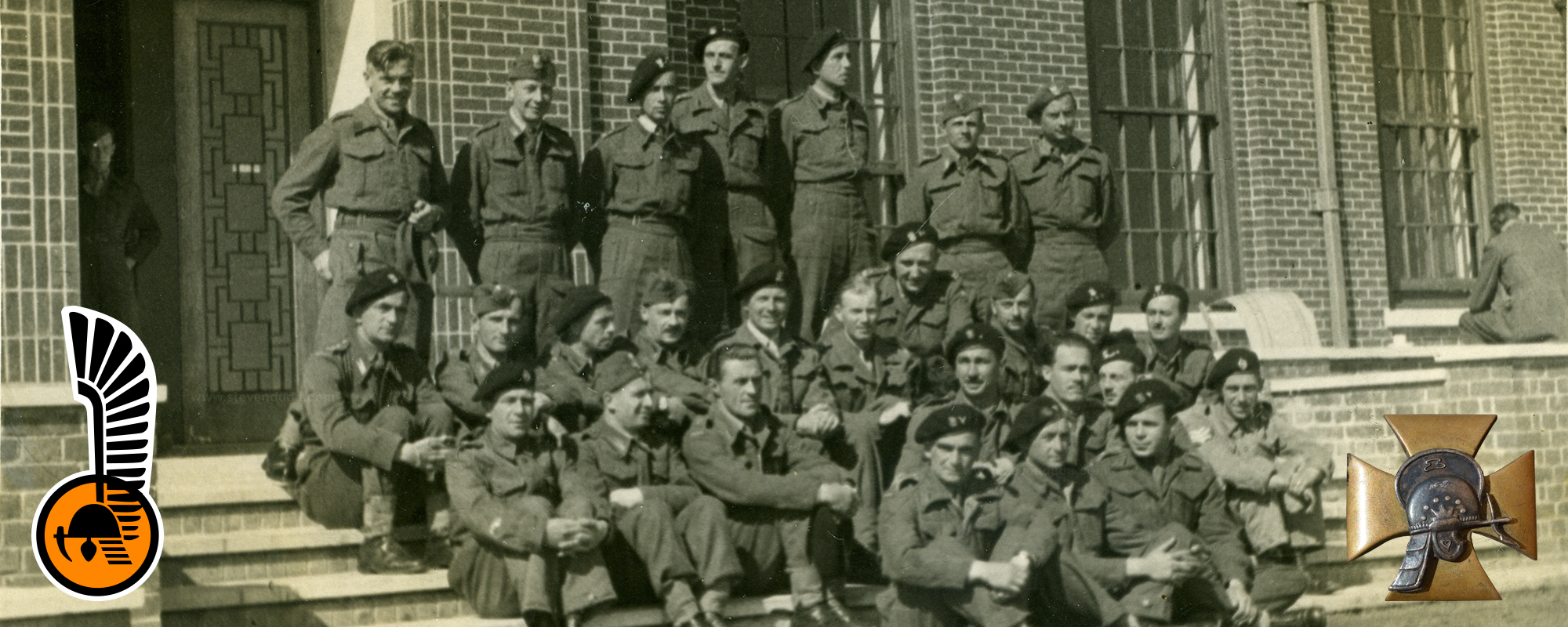
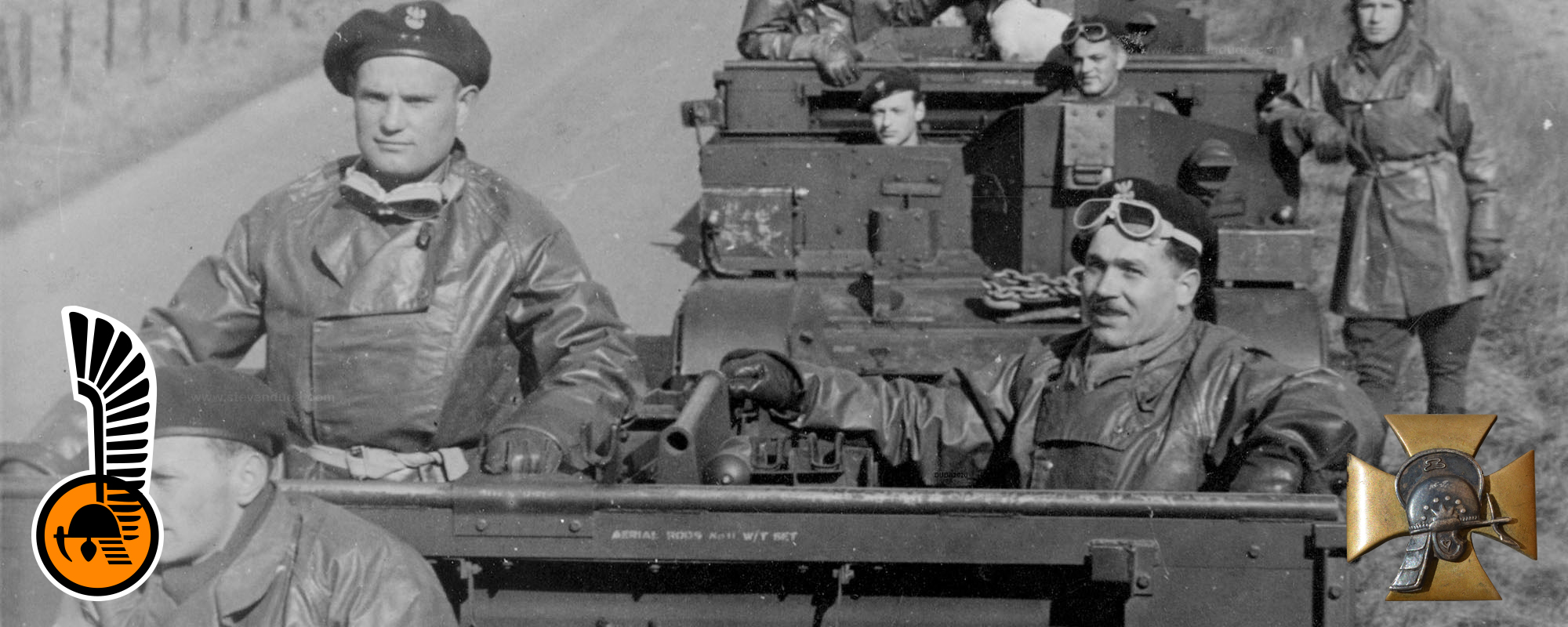
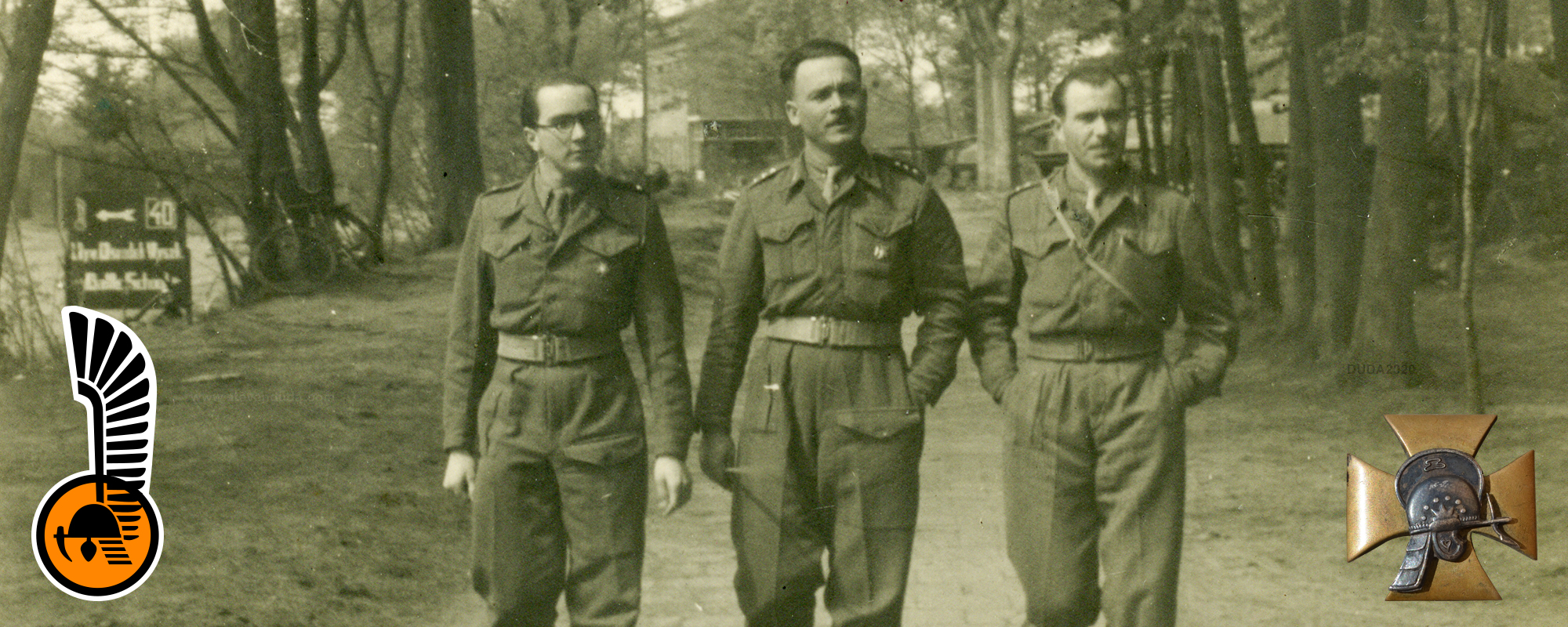
The Independent C.K.M. Squadron1 was a Polish motorized cavalry unit, formed during the Second World War, armed with Vickers heavy machine guns and mortars. Associated with the battalions of the 3rd Infantry Brigade, the squadron provided protection for the 10th Cavalry Brigade of the 1st Polish Armoured Division.
The independent C.K.M. Squadron originated from the 3rd Squadron of the Support Arms Battalion of the Polish Reconnaissance Division. This division had been formed on 1 October 1940 in Douglas, Scotland2, during the reconstruction of the Polish army by General Władysław Sikorski3.
This army was made up of soldiers who had fought in the Polish campaign of September 1939, during the German and Soviet invasions, and then during the French campaign in May 1940. It was also made up of Poles from all over the world.
At its establishment, the Reconnaissance Division was stationed in Perth, Scotland, barracked at the large Tulloch Works dye factory. The division consisted of two motorised battalions, a tank battalion and a support arms battalion.
1 Ciężkich Karabinów Maszynowych.
2 Where the exiled Polish forces had been sent by the British to protect the coastline.
3 First minister of the Polish government in exile and leader of the Polish army.
The different origins of its staff forced the Polish commandment to immediately start intensive training programs, for which many languages1 ​​necessitated a complex organization. The mixture of different origins Army Corps favored the emergence of tensions between officers who influenced the behavior of soldiers. In this army understaffed and perpetual reorganization, the constant changes officers destabilized the troops during their training.
The Weapons Support Battalion consisted of three squadrons: the first for anti-aircraft, the second was in charge of anti-tank and the third heavy machine guns. Equipment and vehicles arrived slowly and erratically but was more difficult to obtain effective complete.
After his parachute training at Largo House in the 4th Parachute Brigade2, cavalry lieutenant Kazimierz Duda was called to the 3rd Squadron and arrived in Perth October 20, 1941. He was charged by the cavalry captain Zawisza, to chronicle the squadron history. Lieutenant Duda commanded the 1st platoon, 2nd by lieutenant Edward Blayda and the third by lieutenant Mieczyslaw Jankowski.
1 Polish, French, English, German, Russian, Romanian, Dutch..
2 Became the 1st Independent Parachute Brigade in September 1941 under the command of Major Stanisław Sosabowski. Kazimierz Duda wrote that he hated him because of his character and his lack of frankness but also because he delayed by several months his assignment to the 3rd Squadron of the Support Weapons Battalion (Major Sosabowski probably wishing to preserve the maximum staff for his unit).
The 3rd Squadron often received men whom other squadrons did not want. They were adventurers, thieves and crooks that need to be put on the right path. There were also men of value and Kazimierz Duda spoke exemplary about two soldiers of the Foreign Legion. As an officer must be, he was very concerned by the quality of the training his men received.
The Polish were persuaded to return quickly in combat but the long wait began to influence morale and let some soldiers to behave brutally1.
On 4 April 1942 the Reconnaissance Division took its new quarters in Dalkeith, Scotland. Trucks of the 3rd Squadron were replaced by Bren Carriers. It was an all-terrain vehicle track that was originally designed to replace the old horse cavalry formations and allowing them a large movement capability. Lieutenant Duda Kazimierz became deputy commander of the 3rd Squadron without leaving his leadership of the 1st platoon. The 3rd Squadron was nicknamed "Buraki2" by the other squadrons following an ordered from Captain Zawisza and repair clothing for troops, who tended to let go.
1 Kazimierz Duda reported knife murder between soldiers following an argument, a fight against Scottish in a pub, regular fistfights between men.
2 Literally "Beets", a derogatory nickname that can be translated into english as "rednecks." (Helena Dudziak, translator ).
On July 1, 1942, the Reconnaissance Division was renamed the 1st Reconnaissance Regiment and was embedded in the 1st Polish Armored Division, which was incorporated on February 25 and put under the command of General Maczek. Cavalry Captain Zawisza left the command of the 3rd Squadron and was assigned to the army of General Władysław Anders in Palestine. Lieutenant Zbigniew Giera, cavalry officer recently arrived from France, took command.
During the fall of 1942, new courses were held for officers of the 1st Armored Division, based on the study of feedback fighting in North Africa.
During 1943, trainings and organizations will continue to accelerate with the same urgency drilled into all men: be prepared!
On November 1, 1943, the 1st Reconnaissance Regiment was disbanded and only the Weapons Support Battalion remained, attached to the 3rd Infantry Division of the 1st Armoured Brigade. Less than half the staff of battalions of the 1st regiment were assigned to the Weapons Support Battalion. The rest filled the gaps in other units of the 1st Armored Division.
1 General Władysław Anders commanded the Polish 2nd Corps, which was integrated into the British 8th Army.
November 18, 1943, the Weapons Support Battalion left Dalkeith to Innerleithen, still in Scotland. The training programs intensified, feeling the officers and men. The following months were spent learning to conduct the Carriers in weapons and combat tactics. Kazimierz Duda, deputy commander, proudly described 3rd Squadron as fully operational and consists of well-trained men.
March 13, 1944, General Montgomery visited the camps of the 1st Armored Division, accompanied by General Maczek. The 3rd Infantry Brigade received the General on the sports fields of Galashiels. In his speech he expressed his desire to meet Polish with whom he was going to fight with and establish a relationship of "mutual trust."
On April 5, the last order of the Weapons Support Battalion was given. The next day, the first order of the Independent Squadron of Heavy Machine Guns (CKM) arrived. Major Szajwoski was appointed commander of the squadron, but he stayed only four days for the post. Kazimierz Duda reported the incident which caused the his departure: april 9, while the Major was accompanied by his officers and had been drinking heavily, he criticized and insulted reserve officers, questioning skills so he himself was a professional officer1. He did not appear the next day before his officers and was transferred to the reserve squadron of tanks and appointed second deputy regiment tank to end up being appointed deputy regiment Dragoons2.
1 The Major was the only officer to be professional. Kazimierz Duda was a reserve officer as all his colleagues..
2 The Major then was promoted to the great displeasure of the officers of the Weapons Support Battalion who felt insulted.
Major Szajwoski's deputy, lieutenant Kazimierz Duda, was charged with the liquidation of the Weapons Support Battalion and reorganized the C.K.M. squadron. A month later, the cavalry captain Marian Kochanowski was appointed to the command of the squadron, Kazimierz Duda remained his assistant position.
On May 23, the 1st Polish Armored Division was transferred entirely to the Region of York (England). The C.K.M squadron took up his quarters in Malton, 18 miles from York. For a month the Division honed its organization and equipment. Combat simulation took place in the company of the 2nd French Armored Division of General Leclerc.
June 6, 1944: Invasion of France by the Allied Forces.
During June the 1st Armored Division continued its preparations. Too short of a hundred men, it was still recognized as a division ready for battle by the British command. It was assigned to the 21th Group of invasion.
From July 15, the 1st Armored Division was gradually transported by road or rail to the cantonment at Aldershot forty kilometers south-west of London.
On July 28, the 3rd Infantry Brigade was ordered to go to the waiting area for boarding. The next day, the C.K.M. squadron embarked in the port of London, aboard the Liberty Ship "Samnesse" with the squadron commander of the 24th Armoured Regiment and the 1st Company of the 9th Infantry Battalion. On July 31, the "Samnesse" set off in the mouth of the Thames towards Dover.
On 1 August, the Polish soldiers discovered the shores of Normandy and were impressed by the huge fleet of vessels Allies. The squadron C.K.M. was taken on barges and landed on August 2 at 12:30 pm on the beach in Courseulles-sur-Mer, which was codenamed Allies "Juno Beach". During three days the 1st Polish Armoured Division landed his men and all his equipment, then taking the direction of the grooping area north of Bayeux. On the road, the Polish discovered a Normandy devastated by bombing and a population partly hostile to invading armies, destitute, living in extreme poverty.
On August 4, the official order came: the 1st Polish Armoured Division, commanded by General Maczek, was to incorporate the 2nd Canadian Corps of the 1st Army invasion to the Caen sector. From August 8, 1944, the history of the CKM squadron merges with the history of the 1st Armored Division. The three platoons of the C.K.M. Squadron were assigned into the three Battalions of the 3rd Infantry Brigade: 1st Platoon was assigned to the 9th Riffle Battalion, the second Platoon passed the 8th Battalion and 3rd Platoon joined the Battalion of Podhale. The C.K.M. commandment remained with the commandment of the 3rd Brigade.
The 1st Polish Armoured Division had its baptism of fire at the time of the last battles of Normandy1, during which it was bombarded three times by Allied aircraft. Through many losses, the Division assured the closure of the Falaise pocket2 which finally allowed the Allies to continue the invasion of France after 2 months past retained in Normandy.
The soldiers of the 1st Armored Division were all brave men, motivated by a desire to reunite with their families and recover their country. Constantly short of staff, she arrived to find some supplements with Polish who was forced to fight in the German infantry.
The 1st Armored Division participated in the liberation of many cities in the north of France, Belgium and the Netherlands. October 29, 1944, the division liberated the city of Breda. The German army had wanted to do Breda a fortress. General Maczek succeeded after two days of heavy fighting and without firing a single shell on the city itself to force the Germans to retreat, not allowing them time to destroy it. 1400 Polish soldiers died during the battle and the city of Breda annually commemorates the release. After operations in the Capelle sector, the 1st Division returned January 11, 1945 to take up his winter quarters in Breda.
The 1st Armored Division completed his military epic May 5, 1945 with the capture of Wilhelmshaven in Germany, main sea base of submarine harbor U-boats of the German Navy (Kriegsmarine).
1 Operation TOTALIZE: abortive attempt in the Caen area to break the German defense that held the Allies in Normandy for 2 months.
2 Operation TRACTABLE: encirclement of the 5th and 7th German divisions. The 2nd Canadian Corps and the 1st Polish Armoured Division closed the encirclement.
In his analysis of the use of independent squadron of heavy machine guns (C.K.M.), Cavalry Captain Kazimierz Duda1 regrets that it has not been used as a unit truly independent. The C.K.M. commandment would supply his platoons on its own, without always knowing their positions, with the risk of its communications interrupted. Kazimierz Duda emphasizes that infantry battalions did not know how to use C.K.M. platoons effectively giving them assignments that do not match their trainings. Despite this, the platoons fought hard and saved the situation very often in fights where the infantry had renounced. The squadron, with its firepower and ordered at whole, would have given much better tactical results. Kazimierz Duda concluded its analysis by the uselessness of the existence of the C.K.M. squadron as an independent unit as used in the campaign of 1944-45.
Upon demobilization in 1947, the Polish soldiers who fought in 1939 to liberate their country can not go home, betrayed by the Allies who left the Soviet Union lead Poland. Many of those who try will run as an anti-communist.
1 Kazimierz Duda obtained the rank of cavalry captain on 7 September 1944.
Most of the men of 1st Polish Armored Division returned to live in Breda in the Netherlands, Belgium, France and Scotland where they were no longer welcome and had to live in labor camps during the economic reconstruction of the Great Britain. Kazimierz Duda said that the living conditions were so difficult in these camps that some preferred to try their luck in Communist Poland, also motivated by the Allied authorities to return home.
The same authorities denied Polish soldiers of their Allied title, veteran's rights and military pension. In the 1960s, General Maczek became a barman in an Edinburgh hotel. In 1989, the last communist government of Poland made him a national apology. He died in 1994 at the age of 102 years and, according to his last wishes, was buried with his men in the Polish military cemetery in Breda.
In 1990, the Polish Democratic Government based in London since 1940, was allowed to return to Poland after the fall of the Soviet Union. For all exiled Polish, World War II finally ended.
Steven Duda
